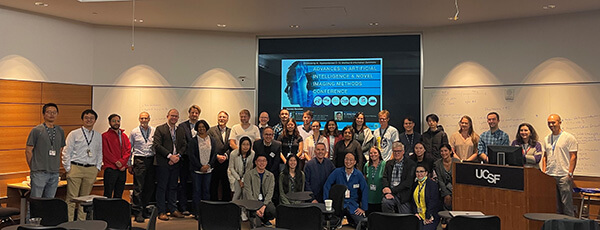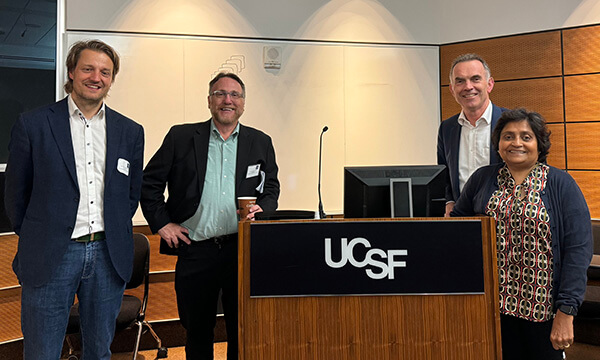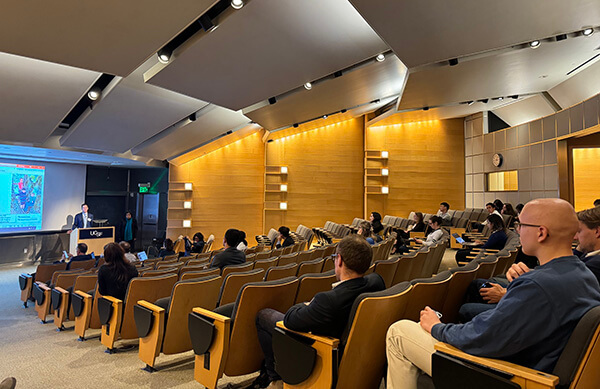AI and Novel Imaging Conference 2023
October 3-5, UCSF Radiology & Biomedical Imaging held the Advances in Artificial Intelligence and Novel Imaging Methods Conference showcasing Hyperpolarized C-13, Midfield, and Information Commons. Conference hosts were the Center for Intelligent Imaging (ci2) and the Hyperpolarized MRI Technology Resource Center (HMTRC), along with collaborators from Christian-Albrechts-University of Kiel. This event was part of ci2's third anniversary celebration.

After introductions from Sharmila Majumdar, PhD, Claus-C. Glüer, PhD, Daniel Vigneron, PhD, and Jan-B. Hövener, PhD, participants explored the latest advances in artificial intelligence and novel imaging methods with the goal of developing new collaborations within UCSF and between UCSF and CAU. Christopher Hess, MD, PhD, Chair of the Department of Radiology and Biomedical Imaging, opened the second day with his talk on “Pushing Imaging AI Across the Finish Line.”

Keynote speaker Akshay Chaudhary, PhD, of Stanford University, spoke on “Data Efficient Deep Learning in Radiology: From Vision to Language.” Keynote speaker Mirabela Rusu, PhD, also of Stanford University, spoke on “Bridging the Gap Between Real Time b-mode Ultrasound and Pathology Images Using Artificial Intelligence methods for prostate cancer detection.”
Dan Vigneron, PhD, Director of HMTRC, hosted a Q&A on Hyperpolarized C13 followed by a presentation on the HMTRC at UCSF for Technology Dissemination and Collaborations. Jane Wang, MD, delivered an update on Hyperpolarized 13C MRI Clinical Translation. Michael Ohliger, MD, PhD, spoke on integrating C13 in prostate and liver studies, after which Renuka Sriram, PhD, presented on pre-clinical HP C13 at UCSF as part of a comparison with her counterpart at Kiel University.
Peder Larson, PhD, delivered his talk on deep learning assessments of prostate and kidney cancer imaging. Jesse Courtier, MD, Beck Olson, and Maddie Hess jointly explained their novel machine learning application in augmented reality 3D model creation and its advantages over virtual reality. Yang Yang, PhD, opened up the mid-field imaging talks with a discussion of AI-powered advancements in 0.55T mid-field MRI. Following that, Michael Ohliger, MD, PhD, spoke on liver imaging, before Rupsa Bhattacharjee, PhD, delivered her talk on quantitative knee imaging.

The conference concluded with discussions of what comes next. After the individual talks and presentations, attendees catalogued research subjects that show potential for collaboration in medical and AI research between our institutions. In this spirit of blue-sky brainstorming, augmented reality was brought up as a way to better teach and explain the dizzying vaults of data that AI enhanced research is capable of generating, as UCSF researchers drew comparisons to Pokémon Go while Kiel researchers described repurposing sea-floor mapping specialists to visualize medical data.
Great work is sure to come in these efforts to foster future research and cooperation across the continents.
For more information about the conference or to view the conference recordings, feel free to reach out to ci2’s administrative team of Annie ([email protected]) or Steaven ([email protected]).
